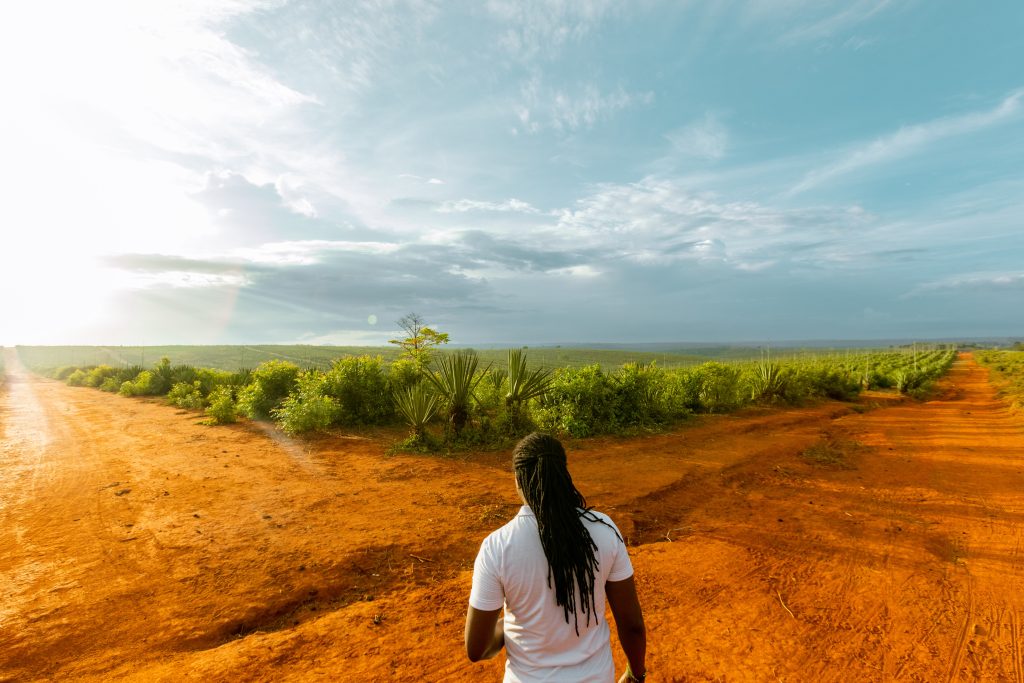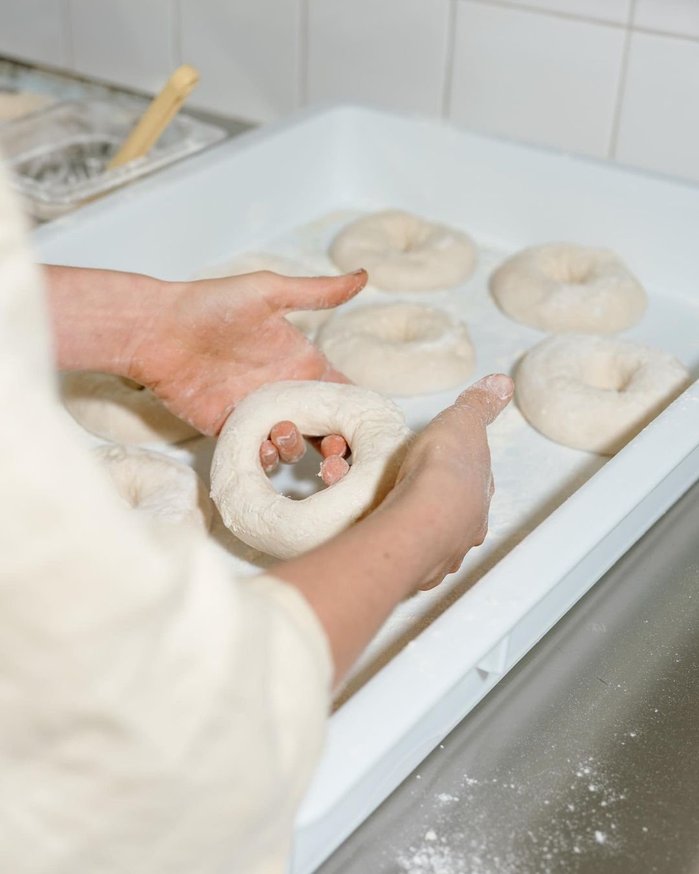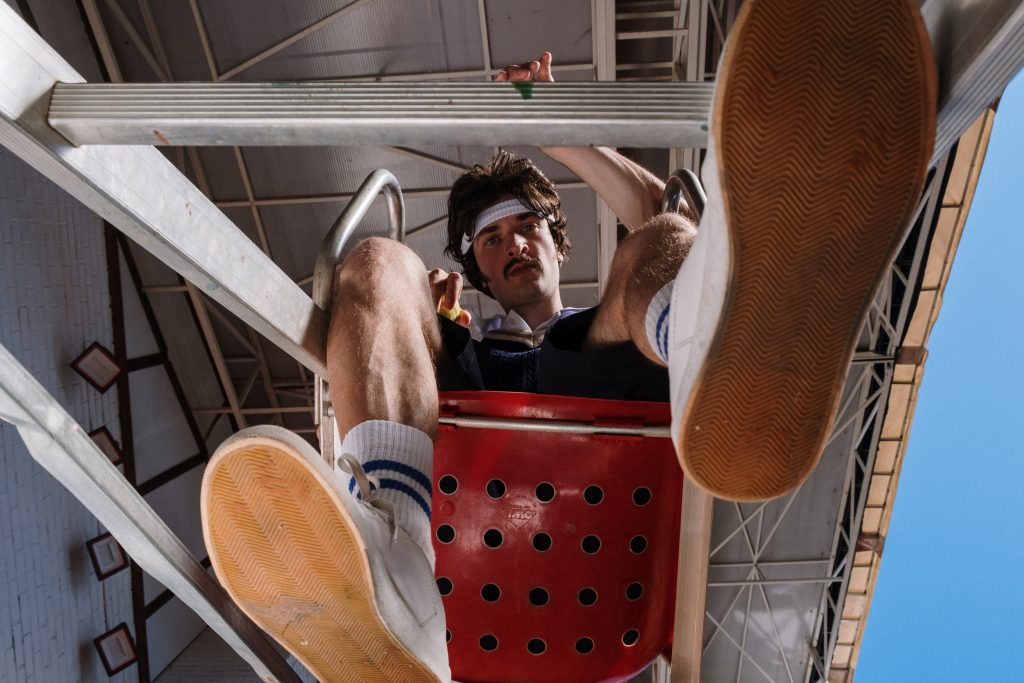In relation to photography, ‘point of view’ refers to the position the camera is in when viewing a scene. Are you laying on the ground, looking up at your subject? Are you flying in a helicopter, looking down at the landscape below? Or are you simply standing and looking straight at your subject? Whether you’re looking up, down, or straight on changes the scene dramatically, and changes the way that the viewer interprets the final photograph.

As seen in this photo by Moses Londo, subjects can be dramatically distorted simply by where you place your camera. A blade of grass can look like a skyscraper, and a skyscraper can look like a tiny little house. It all depends on your point of view.
Point of View in Photography: 4 Examples
While a lot of beginners probably take the majority of their photographs straight-on, it can be a good idea to start looking at subjects from different angles. While you probably don’t want to be known as “the photographer who always takes photos while lying down on the ground”, switching up your position every once in a while can lead to very interesting results.
Here are a few examples of a point of view in photography.
Bird’s-eye View
When photographing a subject from above, it is known as a “bird’s-eye view”. This could be taken from up in the sky, such as when flying in a plane, or could simply be taken by standing on a ladder, slightly above your subject. Photographing from this point of view can make viewers feel as though they are superior to the subject – such as a stern father looking down on his misbehaving child – or protective over the subject. If the subject is an inanimate object, it can sometimes make the viewer feel as though there is a separation between them and the subject.
View this post on Instagram
The photo above was taken by NYFA Guest Speaker Stephanie Pfriender Stylander. The dynamic image shows a man laying in his child’s crib, with Stylander shooting from slightly above. See more of Stylander’s photos on her Instagram.
Photographing from a bird’s-eye view can be especially effective if shooting landscapes from a helicopter or with a drone. What seems like normal landscapes from the ground turn into beautiful, abstract works of art when seen from above.
Becoming the Subject
This point of view tends to be the most effective, especially when photographing human subjects. To use this technique, photograph your subject from the point of view of the person interacting with the subject. For instance, if you were to take a shot of someone making dinner, take a photograph of the food as if you were the chef – perhaps even including hands in the foreground for reference.
These sort of images make the viewer feel as though they are experiencing the scene themselves and makes it easy to put themselves in the photographer’s place. An image from this point of view can be captivating, heartwarming, or even slightly disturbing depending on the subjects you decide to photograph.

The beautiful photograph here, taken by NYFA Filmmaking workshop alum Rozette Rago, shows a baker making bagels. When looking at this photograph, you can feel that it could be your hands forming the dough, and imagine how it feels to be in that kitchen. If this photograph was taken from any other perspective, the viewer wouldn’t feel as connected to the image. To see more of Rago’s incredible photos, as well as the source for this image, visit her website.
Eye Level
This is the most common way to photograph a subject. After all, it is typically the way we regard most subjects in our day-to-day lives, especially other people. In the photo below, two-time New York Film Academy (NYFA) Photography and Cinematography Alum Xavier Velasquez demonstrates this skill with an eye-level photo of a skateboard. Velasquez is a Cinematographer, Photographer, Audio Engineer, Sound designer, and veteran.
View this post on Instagram
To see more of his work and get updates on his latest projects, visit his Instagram.
While photographing humans from eye level is fairly common, this approach can also be quite useful in nature. What would happen if you photographed other subjects from eye level, such as an animal? While we interact with people on the same level every day, we hardly get face-to-face with a fox, a bird, or a snake.
Since we often don’t interact with these sorts of subjects at eye level, photographing them from this perspective allows viewers to feel more connected with them – especially if the subject is making direct eye contact with the camera. It evokes a sense of familiarity and empathy, even with animals that we would be frightened to find ourselves face-to-face with in real life.
Worm’s-eye View
Photographing from below is sometimes referred to as a “worm’s-eye view” as if you were a worm looking up at the world around you. As you can imagine, this makes all subjects look very large, even if they are very small in reality. As opposed to images shot from above, subjects presented in this way look as though they hold power over the viewer, and can seem very intimidating. By photographing a subject from a worm’s eye view, you automatically make the viewer feel vulnerable, even if the subject itself isn’t frightening.
In the photograph below, by Cotton Bro Studios, the approach is used to capture the man from a different perspective. It’s one of many images that show the potential of a worm’s eye view shot.

In the photograph of the seat and the man leaning over, you really feel as though you are laying on the ground, looking up at the bottom of his sneakers. Getting down on the ground allows you to see scenes that you wouldn’t ordinarily experience in your everyday life.
Learn New Photography Techniques at NYFA
If you’ve found yourself caught in the slump of always taking photographs from your own point of view, try to switch things up! Climb up on a ladder, lay down on the ground, or get eye-to-eye with subjects you don’t typically see from that angle. The possibilities are endless. To learn even more photography techniques, explore our programs in Photography or request more information today!